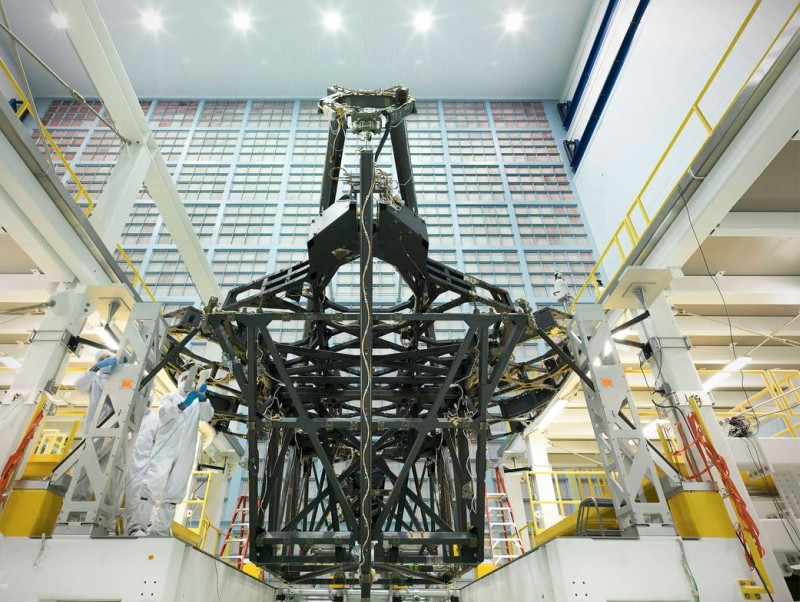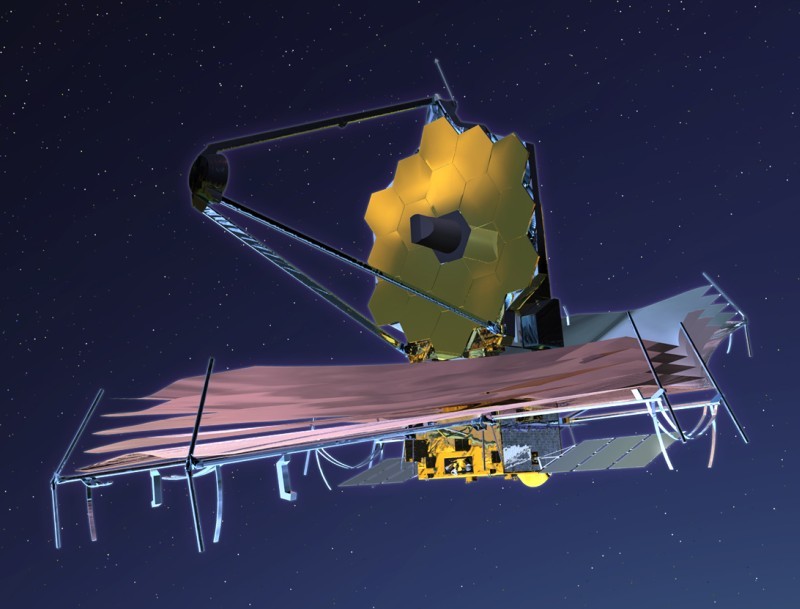On the telescope them. James Webb installed the first segment of the mirror

On November 25, 2015, NASA announced the successful installation of the first of 18 mirrors on the James Webb Space Telescope. As is known, this orbital observatory is supposed to replace the Hubble space telescope.
In the sterile room of the Goddard Space Flight Center (Maryland), a robotic manipulator arm under the control of a group of engineers raised and lowered into place the hexagonal fragment with a diameter of just over 1.3 m and weighing about 40 kg. The 18 basic segments joined together form a single 6.5-meter mirror of beryllium, covered with gold film (the mirror diameter is 2.7 times larger than that of the Hubble). Installation plan to finish in early 2016.
The work of the engineers is monitored by two webcams available at http://www.jwst.nasa.gov/webcam.html .
')
In addition to the reflective coating, motors and spacers are installed on the mirror, correcting the curvature of the surface. For accurate focusing fasteners main mirror can not be displaced by more than 38 nanometers.

“The James Webb Space Telescope will be the main astronomical observatory of [humanity] in the next decade,” said astronaut and assistant administrator for the Office of Scientific Missions at NASA headquarters in Washington, John. - The installation of the first mirror is a milestone that symbolizes new and specialized technologies that were developed to enable the observatory to study the first stars and galaxies, study the formation of star systems and planets, give answers to the questions about the evolution of our solar system and take the next big steps in search of extraterrestrial life on exoplanets. "
The most accurate instrument will be able to detect cold terrestrial planets in the immediate vicinity of the Sun (15 light years).

The telescope "James Webb" will be sent into orbit in October 2018, it will take a position at the L2 point beyond the Earth's orbit.
Source: https://habr.com/ru/post/369075/
All Articles